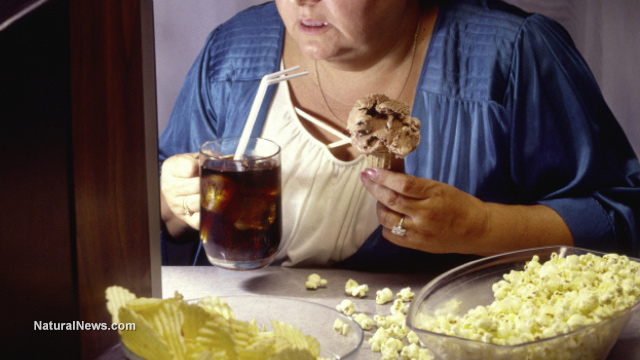 Junk food rewires brains to make people addicted and avoid eating a balanced diet
Junk food rewires brains to make people addicted and avoid eating a balanced diet(NaturalNews) The food industry is a sophisticated, calculating and very profitable enterprise that preys on consumer weaknesses, ones they've strategically created.
Food sellers have one priority when it comes to consumers, and it's not their health, but rather assurance. They need you to keep coming back for more, and they achieve this by constructing foods, especially processed foods, with three critical ingredients.
The perfect combination of
salt, sugar and fat makes food taste irresistible, triggering intense cravings in the brain. "Salt, sugar and fat are the three pillars of the processed food industry," said Michael Moss, a
New York Times reporter who has investigated the secrets of the food industry's scientists.
"And while the industry hates the world 'addiction' more than any other word, the fact of the matter is, their research has shown them that when they hit the very perfect amounts of each of those ingredients... they will have us buy more, eat more."
Teams of chemists, physicists and neuroscientists work diligently to develop foods that we can't stop eating. These perfectly engineered products don't just leave us craving more but can change the way we feel about healthy foods.
Proof that junk food makes us want fruits and veggies less
Excessive consumption of junk food can change behavior, weaken self-control and lead to overeating and obesity,
according to a study by the School of Medical Sciences, UNSW Australia.
Published in the journal
Frontiers in Psychology, researchers discovered that feeding rats junk food made them fat and reduced their appetite for "novel foods." Led by Professor Margaret Morris, experts taught young male rats to associate two different sound cues with flavors of sugar water -- cherry and grape.
The rats raised on a healthy diet stopped responding to the cues linked to a flavor after having recently indulged in one of them. This biological signal is hardwired into animals, protecting them from overeating and promoting a balanced diet.
Rats that ate a diet filled with
junk food for two weeks, including cookies, cakes, pie and dumplings, increased their weight by 10 percent and changed their behavior "dramatically."
The rats "became indifferent in their food choices and no longer avoided the sound advertising the overfamiliar taste. This indicated that they had lost their natural preference for novelty," the study observed.
Even after being back on a healthy diet, the behavior continued for quite some time, leading researchers to suggest that junk food causes lasting changes in the reward circuit parts of the rats' brains.
The
orbitofrontal cortex, an area of the brain containing the secondary taste cortex, is responsible for representing the reward value of taste. The food industry has learned to manipulate this decision-making process by using tactics that enhance
food appeal.
The "crunch" factor is an important one. Studies show that people associate crunchy food with being more fresh or crispier. The louder the crunch, the better -- at least in the food industry's mind.
Food texture in general plays a big role in our desire to eat. Scientists working for Nestle developed oval-shaped chocolate, designed to melt more smoothly in the mouth, as opposed to rough-edged chocolate bars.
Flavor enhancers are one of the industry's biggest secrets. Designed to keep their texture, boxed foods contain many ingredients that have nothing to do with taste, but instead preservation.
"Ingredients like that are kind of bundled under what may seem like relatively innocuous labels like 'natural flavours' or even 'artificial flavours,' when truly they are much more surprising when consumers really understand what it is," said Bruce Bradley, a former food executive who worked for General Mills, Pillsbury and Nabisco.
"There's tremendous amounts of money spent behind creating tastes and smells that feel real but in reality are completely artificial."
http://www.naturalnews.com/046787_junk_food_addiction_processed_foods.html